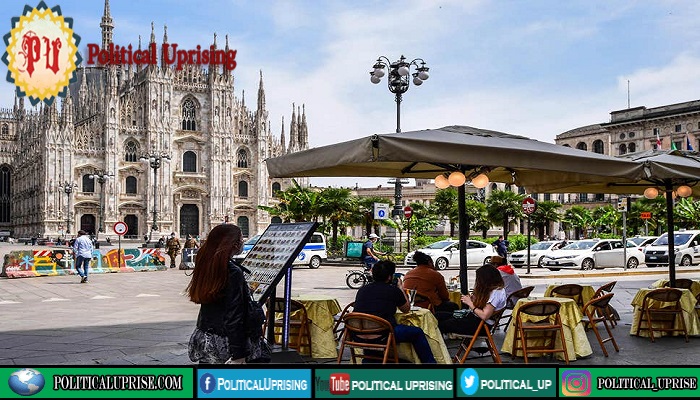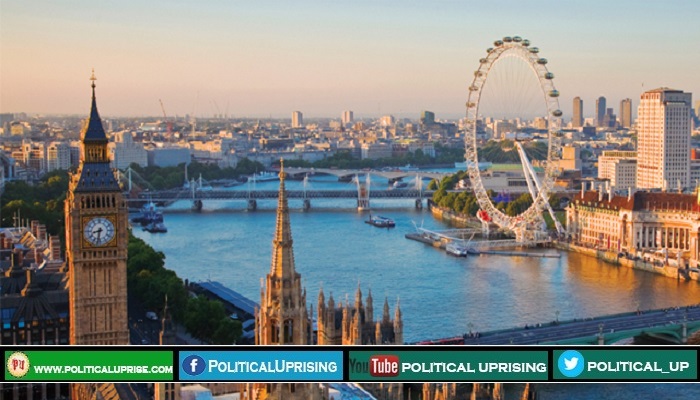Across Europe, governments have started to open their borders after weeks of closure during the coronavirus pandemic.
With the summer holiday season upon us, people have started to wonder whether they will be able to get away for a break abroad and how far they will be able to go.
The border situation remains a mixed picture across Europe, with each country imposing its own rules and its own timetable for re-opening.
The EU has recommended the bloc opens its external borders from July 1 to 15 countries. These are Algeria, Australia, Canada, Georgia, Japan, Montenegro, Morocco, New Zealand, Rwanda, Serbia, South Korea, Thailand, Tunisia, Uruguay and China (although China is subject to confirmation of reciprocity).

Member states are not, however, legally obliged, to follow the recommendation. The list is to be updated every two weeks, the EU says.
Albania
Commercial flights resumed in Albania on June 15.
All EU nationals and residents are eligible to enter Albania at the moment.
The country can be reached with flights from Germany, Italy, the UK, Serbia, Austria, Greece and Turkey.
Passengers at all terminals are expected to pass through a “disinfection tunnel” and undergo “body temperature measurement”. Anyone with body temperature higher than 37.5°C “shall be interviewed by the company doctor”.
Austria
Austria first opened its land borders with Germany, Switzerland, Liechtenstein, Slovakia, Slovenia, Hungary and the Czech Republic on June 4.
The country reopened its border with Italy from June 16, but a travel warning was issued for the region of Lombardy.
There are no restrictions with most European Union countries except for travellers from the UK, Sweden, and Portugal who must still present a medical certificate or self-isolate.
Due to a high number of cases, travellers from the Gütersloh district in Germany will need a negative COVID-19 test (administered in the last 48 hours) to travel to Austria.
European Rights Court faults France over asylum seekers sleeping rough
Entry by air is prohibited to citizens coming from countries outside the Schengen Area.
Belgium
Borders with the European Union as well as the UK and the four other Schengen countries (Switzerland, Liechtenstein, Iceland and Norway) have reopened.
There is no quarantine or health certificate condition.
Non-essential travel to and from outside the EU and Schengen countries remains prohibited until July 1.
Bosnia and Herzegovina
The border is only currently open to citizens of neighbouring Croatia, Montenegro and Serbia other foreign arrivals are not permitted.
There are some exceptions, including freight drivers, residents and diplomats.
Bulgaria
Bulgaria opened its borders on June 1 to EU countries, the UK, San Marino, Andorra, Monaco, Vatican, Serbia and North Macedonia citizens, as well as to medical workers and family members of Bulgarian citizens, as listed on the government website.
Travellers from Bosnia and Herzegovina and Montenegro are also allowed.
But some exemptions remain. Tourists from Belgium, Portugal, Sweden, and the UK must self-isolate for 14 days.
Tourists from the other countries must meanwhile submit a declaration acknowledging the have been informed of the country’s anti-epidemic measures and with risks associated with COVID-19 to health inspector at the border.
Croatia
Croatia has reimposed quarantine for travellers from North Macedonia, Serbia, Kosovo and Bosnia on June 25 following a new coronavirus outbreak in the region.
European Union to start allowing in outside travellers from July
Borders remain open to EU and UK citizens, with no obligation of quarantine.
The country began opening its borders in mid-May without restriction to nationals from the Czech Republic, Hungary, Austria, Estonia, Latvia, Lithuania, Poland, Slovenia, Germany and Slovakia.
Cyprus
Cyprus resumed tourist travel on June 9 after closing its borders for almost three months.
The country will also cover health costs in case of coronavirus contamination occurring on the Mediterranean island.
Authorities have created two lists of countries.
Travellers from Category A countries Austria, Bulgaria, Croatia, Czech Republic, Denmark, Estonia, Finland, Germany, Greece, Hungary, Latvia, Lithuania, Luxembourg, Malta, Norway, Slovakia, Slovenia, and Switzerland — face no restrictions.
Those from Category B nations — Israel, Poland, and Romania —must present a health certificate no older than three days.
Travel from other EU countries not included in the lists is only allowed in exceptional cases and requires government approval. These include the country’s two main tourism markets, Britain and Russia.
However, flights from Britain could restart in mid-July, and a few weeks later from Russia.
Citizens of the US, France, Spain, and Italy remain excluded until further notice.
European Union released details of $824bn coronavirus recovery plan
Entries from countries outside the EU/EEA/Schengen are for now not allowed.
Czech Republic
Borders with Austria and Germany reopened on June 5, 10 days earlier than expected. The country opened its frontier with Slovakia and Hungary on May 27, but with restrictions.
The other EU countries have been divided into coloured groups dependent on risk: green, orange, and red.
From June 15, Czech residents and EU citizens from green countries — eastern and Baltic member states, Finland and Norway — were able to travel to and from the country without any requirements.
Those from the yellow group, which includes France, Italy, and Spain, must have a valid health certificate to enter.
Test and quarantine conditions will apply for people entering from the UK and Sweden the two red nations in Europe.
Denmark
Denmark’s borders have now reopened to most European countries, but this is subject to change based on a set of health measures and analysis. Borders to Sweden and Portugal are still closed, and a list of open or closed countries is updated weekly.
Estonia
Opened borders to Baltic neighbours on May 15 and to the rest of the EU, the Schengen area, and the UK on June 1.
“Travel documents and medical symptoms are checked” at points of entry, the Foreign Ministry has said.
European Commission says we must focus on health & jobs now, fiscal matters later
Those coming from countries with a high infection rate will have to self-isolate for two weeks.
Finland
Finland has allowed travellers from Norway, Denmark, Iceland, Estonia, Latvia and Lithuania from June 15.
From 13 July travel restrictions were lifted for Andorra, Austria, Belgium, Cyprus, Germany, Greece, Hungary, Ireland, Italy, Liechtenstein, Malta, the Netherlands, San Marino, Slovakia, Slovenia, Switzerland, and the Vatican.
Also from 13 July, Finland is allowing work-related travel and other essential traffic from the following non-EU countries: Algeria, Australia, Georgia, Japan, New Zealand, Rwanda, South Korea, Thailand, Tunisia, Uruguay and China (provided that reciprocity is confirmed in the EU).
Restrictions on travel to Finland have been extended for the UK, Spain, Poland, Portugal, France, the Czech Republic, Sweden and some other European nations.
France
Travellers from EU member states as well as Andorra, Iceland, Liechtenstein, Monaco, Norway, San Marino, Switzerland, and the Vatican have been allowed to visit the county since June 15 without a health certificate or any form of quarantine upon arrival.
But passengers from Spain and the UK are asked to submit to a voluntary quarantine, “in reciprocity” to current regulations in place in both countries, France’ Foreign Affairs Ministry has explained.
Per the EU Council’s recommendation, France reopened its borders to 15 non-member states on July 1.
European Commission started new legal case against Poland over muzzling judges
Germany
On June 15, Germany lifted border restrictions for travellers coming from the EU, Switzerland, Norway, Iceland, Liechtenstein, and the United Kingdom.
Germany, however, decided to extend until August 31 its warnings on travelling outside the EU.
Those that do manage to get in must self-isolate for 14 days.
Greece
The Foreign Affairs Ministry published on Sunday, May 31, its plan for reopening borders, which entails three different phases.
Phase 2 saw tourism travel from EU countries resume on June 15, with flights landing in Athens and Thessaloniki.
Travellers coming from any of these airports listed by the European Aviation Safety Agency, as well as Italy, Spain, the Netherlands or Sweden are tested upon arrival until June 30, with the authorities stressing that an overnight stay is required. If the test if negative, travellers can then continue on to their final destination.
Only essential travel from Albania and North Macedonia is permitted while a travel ban from the UK and Turkey is maintained and all visitors are subject to sample testing.
Phase 3 is expected to start on July 1. International flights will be allowed into all airports in Greece and all travellers subject to random tests upon arrival.
“Additional restrictions regarding certain countries will be announced at a later date”, the Foreign Ministry says.
Arrivals by sea will also be allowed on July 1, with travellers subject to random testing.
European Union,Britain fail to bridge gaps in future relationship talks
The border with Serbia is closed until July 15 following a new outbreak in the country.
Hungary
Hungary is reimposing travel restrictions from July 15 due to a resurgence of coronavirus infections around the world. It has a traffic lights system for countries based on their infection rate.
Only Hungarians will be allowed to enter if they are coming from ‘red’ countries with high infection rates. These include Albania, Ukraine, Belarus and almost all of Asia, Africa and South and Central America. Arrivals will have to quarantine for two weeks.
Hungarians and foreigners coming from ‘yellow’ countries have to quarantine for two weeks, but can leave quarantine after being tested. These include: Bulgaria, Portugal, Romania, Sweden, the UK, Russia, Serbia, Japan, China and the United States.
Hungary had opened its borders without restrictions to citizens of the European Union, the European Economic Area (excluding the United Kingdom) and of Switzerland on 21 June.
Hungary opened its border with Austria, Slovakia, Croatia, the Czech Republic, Slovenia and Serbia on June 12 without the need for going into quarantine.
Iceland
Iceland reopened to EU and UK travellers on June 15.
Tourists are tested upon arrival. A few hours later, they get the result on their phone, after downloading a tracking app.
The test, free for a period of two weeks, will cost 15,000 Icelandic Krona (€100) from July 1. Children born in or after 2005 will be exempt.
Asian and European Stocks,oil start new quarter with more losses
Authorities are yet to clear procedures for those who test positive.
Ireland
The Irish health authorities currently require anyone coming into Ireland, except from Northern Ireland, to self-isolate for 14 days, upon arrival, including Irish residents.
Arrivals have to complete a passenger locator form, although exemptions are in place for providers of essential supply chain services such as hauliers, pilots and maritime staff.
Italy
Italy opened its borders on June 3 to EU, UK, Schengen area, Andorra and Monaco citizens, following the nationwide lockdown which came into force on March 9. Borders also opened with Vatican City and San Marino on this date.
Travellers coming from the above countries don’t have to undergo quarantine unless they have been in any other country in the 14 days before reaching Italy.
The government dismissed any possible attempt to apply different confinement rules in different regions as “unconstitutional” following spats between local governors.
Therefore, the same confinement rules will apply in the same way to all regions.
Cruises on Italian ships are currently suspended.
Europe face sports,music events cancellations over corona-virus
Unlike France and France, Italy opted out of reopening its borders to non-member states on July 1 as recommended by the EU Council with health minister Roberto Speranzaarguing the country was taking “the line of caution”.
“The situation at the global level remains very complex. We must avoid that the sacrifices made by Italians in these months are in vain,” he added.
From June 3, residents of EU and EEA countries, as well as Switzerland, have also been able to enter the country without being submitted to a 14-day quarantine if the country they travelled from has a 14-day cumulative number of COVID-19 cases not exceeding 15 per 100,000 population.
Flights to and from European countries where the number of cases per 100,000 within the last 14-day cumulative period is between 15 and 25 can also resume.
The country is among the EU member states which reopened its borders on July 1 to 15 non-EU countries.
Lithuania
Lithuania has opened its borders to citizens from the EU, EEA, Switzerland and the UK provided the incidence of COVID-19 in the country they reside in does not exceed 25 cases per 100,000 population in the last 14 calendar days.
Requirements to self-isolate when arriving from these countries have been lifted.
However, Vilnius introduced a 14-day isolation requirement for its nationals or residents arriving from 50 countries most affected by COVID-19 including Sweden, Russia, Belarus, Portugal, and the US. Previously, they were only “advised” to self-isolate.
Luxembourg
Luxembourg’s border with Germany reopened on May 15 and travel has not been restricted with other European nations, although travel from outside Europe is banned.
European parliament to ratify terms of Brexit deal
Malta
Malta’s Tourism Ministry announced that it will reopen tourism travel on July 1.
On that date, borders will reopen to travellers from Germany, Austria, Cyprus, Switzerland, the Italian islands of Sicily and Sardinia, Iceland, Slovakia, Norway, Denmark, Hungary, Finland, Ireland, Lithuania, Israel, Latvia, Estonia, Luxembourg, Czech Republic, Italy, France, Poland, Spain, Croatia, and Greece.
Restrictions on all other flight destinations will be lifted on July 15.
Montenegro
Entry to Montenegro is allowed without quarantine, so long as you are coming from a country with a rate of transmission less than 25 per 100,000 inhabitants.
Travellers from Albania, Bosnia and Herzegovina, Kosovo, Turkey, Israel, Poland, Romania, Italy and Ukraine must, however, present a negative COVID-19 test upon arrival.
The Montenegro government is keeping an up to date list of countries where people are allowed to enter from without entering quarantine.
French, UK and Spanish citizens need to self-isolate upon arrival, as well as travellers from all those countries not mentioned in that list.
Netherlands
The Dutch government is restricting non-essential travel from people from third countries until July 1, but EU citizens – including British nationals – can now enter the country.
Tourists from the UK and Sweden are being urged to self-isolate for 14 days.
Like many other nations, there are strict requirements around shaking hands, maintaining social distancing and hand-washing.
Norway
Norway has closed its borders and only travellers for fellow Nordic countries — Denmark, Iceland, and Finland — were able to return on June 15.
Sweden was excluded from the measure.
UK moves closer to leaving European Union
“Travellers from EEA/Schengen countries with acceptable levels of infection” will be able to visit the country from July 15.
The Norwegian Institute of Public Health will update the map showing areas with exemptions of quarantine duty on 10 July and the list will be updated at least every second week.
Norway currently has a 10-day quarantine for those returning from international travel..
Poland
Borders reopened for EU nationals on June 13 with no quarantine condition, and some international flights from within the bloc have restarted. Poland’s external EU border remains closed, except for specific circumstances.
Portugal
Nationals of EU countries, Schengen area and passengers on flights from the UK, Brazil, the Community of Portuguese Language Countries, the US, Canada, Venezuela and South Africa are allowed in the country.
Border controls have been in place since March 16. There is currently no requirement for arrivals to go into quarantine, except in The Azores and Madeiras island.
The border with Spain reopened on July 1.
Russia
Russia is considering resuming international flights after July 15, Deputy Prime Minister Tatyana Golikova said in a news conference on July 10.
She said Russia would resume flights to countries where the average incidence rate is below 40 cases per 100,000 population.
European leaders urge calm after fresh Tripoli assault
It has drawn up a list of 13 countries that it could resume flights with: United Kingdom, Hungary, Germany, Denmark, Italy, the Netherlands, Norway, Poland, Finland, Vietnam, China, Mongolia and Sri Lanka.
International flights were halted in March. On June 8, Russia said it will partially reopen its borders as the country eases coronavirus restrictions.
Prime Minister Mikhail Mishustin said that travelling abroad for work, medical or studying purposes will be allowed, as well as for taking care of relatives.
He also said Russia will let in foreigners seeking medical treatment or taking care of family members.
Romania
People coming from Austria, Bulgaria, the Czech Republic, Cyprus, Croatia, Switzerland, Germany, Greece, Island, Latvia, Liechtenstein, Lithuania, Malta, Norway, Slovakia, Slovenia and Hungary can go in without the need to quarantine.
People coming from EU/EEA/Schengen countries not listed above must still self-isolate for 14 days.
Flights to a number of European countries including Belgium, France, Italy, Spain, Germany, Austria, the Netherlands, and the UK remain suspended.
Serbia
Serbia’s borders are open.
Slovakia
Slovakia reopened its borders to Germany, Liechtenstein, Switzerland, Slovenia, Croatia, Bulgaria, Greece, Cyprus, Malta, Estonia, Latvia, Lithuania, Finland, Norway, Denmark and Iceland on June 10.
The country’s borders to Austria, Hungary and the Czech Republic were opened a few days earlier, on June 5.
European countries urged Iran to stop violating nuclear deal
Slovenia
Slovenia reopened borders to citizens coming from 18 countries on May 15, including neighbouring countries such as Austria, Croatia and Hungary. Montenegro and Italy were added to this list from June 15. Anyone entering from a country with high levels of COVID-19 will have to quarantine for 14 day.
Spain
Spain reopened its borders to EU member states, Schengen area countries and the UK on June 21. None of these travellers have to self-isolate.
Portugal had been the only exception to the above, but the border between the two countries reopened on July 1. The country also opened up to the list of non-member states approved by the EU Council.
Sweden
Sweden has introduced border restrictions but it only applies to non-essential travel from countries outside the EU/EEA, except the UK and Switzerland.
That restriction came into effect on March 19 and has been extended until July 7.
Switzerland
Switzerland, who brought in border controls on March 13, will reopen borders to all EU countries, the UK, Norway, Iceland and Liechtenstein on June 15, instead of July 6 as previously planned.
The government is also reopening borders to non-EU and non-EFTA workers on July 6, as it announced on June 24.
Any foreign nationals who currently try to enter Switzerland without a valid residence or work permit will be refused entry.
Air passengers from abroad are currently only able to enter the country through the airports at Zurich, Geneva and Basel.
European countries warns Iran over developing nuclear missile
The Swiss authorities have not imposed any quarantine measures on persons entering the country. However, you must comply with the government’s hygiene and social distancing rules.
Turkey
Turkey has opened its border to foreign travellers, except for the land border with Iran. Arrivals may have to go through health checks.
United Kingdom
Borders are currently open. Since June 8, visitors from abroad are required to quarantine for 14 days. Those exempt from these measures include people travelling from Ireland, the Channel Islands or the Isle of Man.
As in other countries, certain professions are exempt from these rules, such as healthcare workers travelling to deliver healthcare in the country. Upon arrival, those who are required to self-isolate need to provide their journey and contact details.
On July 3, England announced plans to scrap its quarantine rules for a number of countries it deems low-risk, including France, Spain, Germany and Italy.
This will come into effect on July 10, meaning travellers arriving from those countries will not be required to self-isolate for 14 days.



